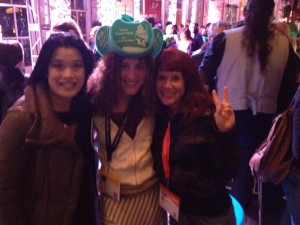Last year I was intrigued when I read about Magic Recs, which purported to be an ‘experiment’ by Twitter. The goal was to offer intelligent suggestions on which Twitter accounts would be interesting to follow. Always keen to understand how social graphs are developed and enhanced, I was further intrigued by the fact that ‘signing up’ simply entailed that I follow the eponymous Twitter account.
I was a bit shocked when I then started seeing all kinds of notifications not of suggested accounts to follow, but of specific actions taken by my own followers. This is how it looks:
This targeted, direct messaging of other users’ behavior took me aback. While technically information about who is following who is available to those who have copious amounts of spare time to hunt for such information, disclosure of these events – as they happen – is not the service people sign up for when they sign up for Twitter, which is effectively an individual broadcast service.
When I (quickly) concluded that simply learning who other people are following is not an ingenious recommendation algorithm – and surely one that breaches the assumptions I made when I signed up – I unfollowed the account.
Now the ‘experiment’ is a default. And while with some effort you can opt out of seeing others activity by deselecting the pre-checked ‘recommendations’ notification box, you can’t opt out of others seeing yours.
As a broadcast service, this narrowcasting is an entirely different, intrusive proposition. This is why people balked when location-aware services using APIs from check-in services (reference Highlight and Banjo, who since ‘pivoted’) started notifying them who was closeby without any specific intent by the user to do so. Sure this was all ‘discoverable’ – but it was far from the experience that those checking in (or simply allowing their location to be picked up by certain apps) signed up for.
Because narrow ain’t broad. It’s different.
Update 20 March 2014: despite changing my notification settings to no longer receive these messages, I continue to receive direct texts of who is following whom. So the unwilling voyeuristm continues.


